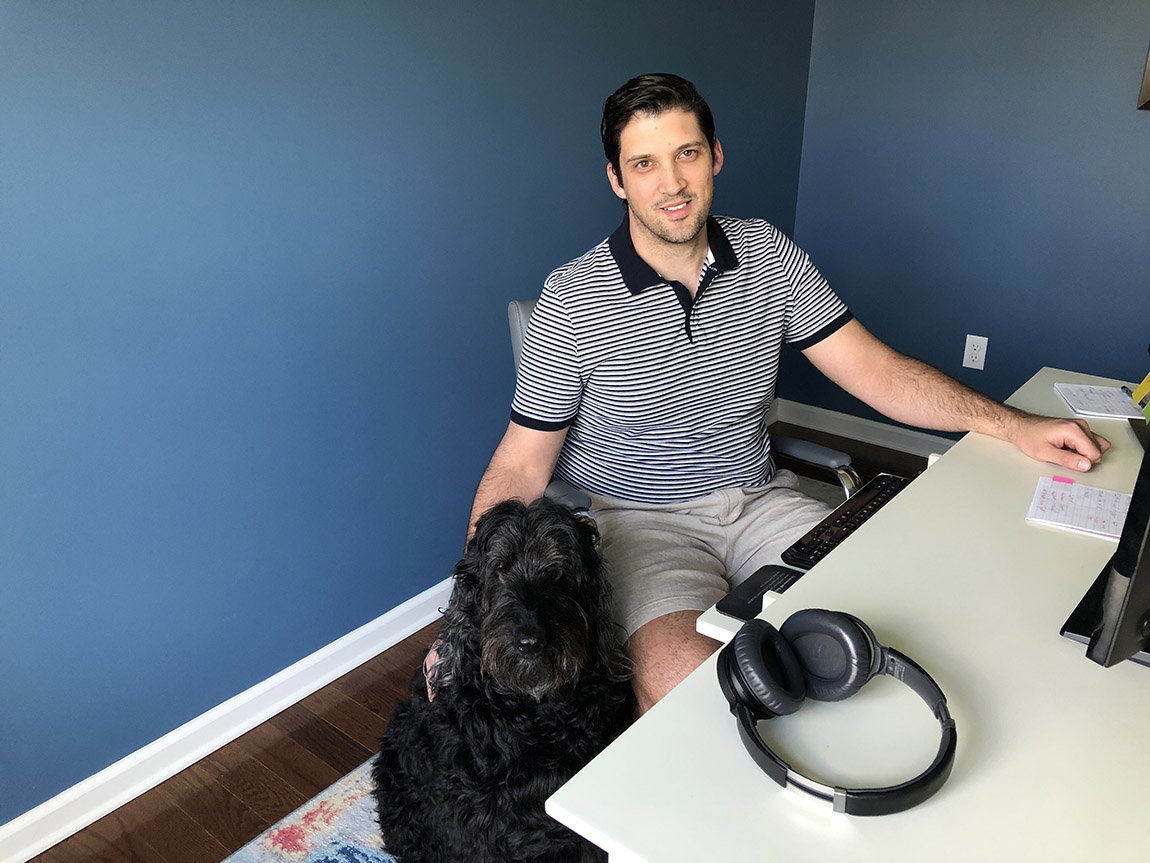Plotting a Pandemic's Path
From his home office, Walter J. Chesla ’05 provided hospital leaders with critical details to make life-and-death decisions.By: Cindy Kuzma Monday, June 8, 2020 11:10 AM
 Walter J. Chesla '05, clinical business intelligence analyst at Lehigh Valley Health Network, works from his home office alongside his dog Oreo. Chesla interpreted critical data for the health network as it responded to COVID-19.
Walter J. Chesla '05, clinical business intelligence analyst at Lehigh Valley Health Network, works from his home office alongside his dog Oreo. Chesla interpreted critical data for the health network as it responded to COVID-19.To manage the COVID-19 pandemic effectively, health care executives need hard data. Who’s getting tested where, and which results are positive? How many intensive care unit beds remain? Are personal protective equipment and ventilator supplies adequate?
For Walter J. Chesla '05, tracking these facts has become more than a full-time job. Since late February, the clinical business intelligence analyst and the rest of his 30-person team at Lehigh Valley Health Network have been solely dedicated to COVID-19.
Together, they transform complex reams of data into something time-strapped executives can understand in five seconds: graphs with trend lines pointing up or down, say, or color-coded maps with darker shades for hotspots and lighter for areas with fewer cases.
The work has been intense. At its peak, Chesla was updating the information every hour from 5 a.m. to midnight. And it demanded speed. Projects he might normally have taken a week to prepare were turned around in days, if not hours.
Fortunately, Chesla’s computer-science education at Muhlenberg prepared him well to tackle an unprecedented challenge. Here, he learned the value of an empirical approach, gaining knowledge through observation and experience. “You’re not going to learn anything by reading manuals and studying on the internet, you’re only going to learn by doing it and making mistakes,” he says.
His professors also preached Occam’s razor, a simpler-is-better approach to problem-solving. The principle served him well when he started out in educational software development, during his transition into health care and data analysis in 2015, and now in his current COVID-19 work. “The approach we took for this whole crisis response was to keep it simple, get it out there. We’ll iterate and develop and go from there.”
Thanks in part to his efforts, LVHN was able to manage the crisis and avoid overwhelming any of its facilities. Chesla’s breakdowns are now beginning to focus on what it takes to open more facilities and bring patients back for elective surgeries.
He’s glad for fewer hours and a little more time to breathe and walk his dog Oreo, who’s often by his side in his home office. However, he has no regrets about the work he describes as the most interesting of his career. “These were absolutely some of the longest, most stressful days I’ve ever had,” he says. “But I knew at the highest levels of our network, it was appreciated. I knew it mattered.”
